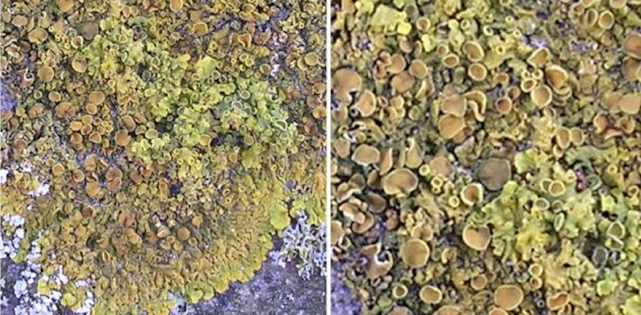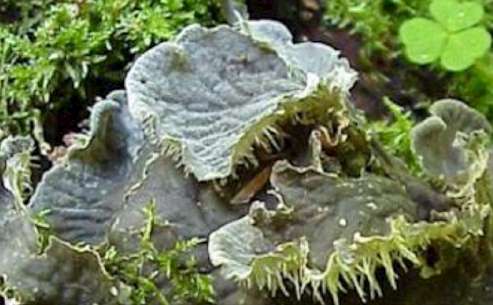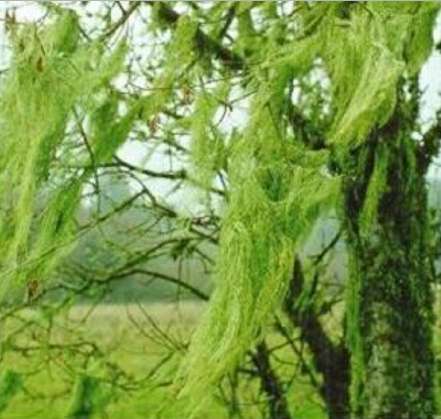..
MORE IMAGES FROM CHAPTER
13: FUNGAL SYMBIOSIS

Fig. 13.11.
The lichen Xanthoria parietina, which commonly
grows on rocky shores exposed to salt spray. Left:
The lichen thallus. Right: close-up of part of the
thallus, showing the disc-shaped apothecia which release
ascospores.[© Jim Deacon]

Fig.
13.12a. The foliose lichen, Lobaria pulmonaria
(lungwort), which grows on tree trunks in unpolluted
parts of Britain. The lobes are bright green, about 1-2
cm diameter, and can have brown fungal fruiting bodies
(apothecia) on the ridges. [© Jim Deacon]

Fig.13.12b:
Peltigera canina (the ‘dog lichen’) is a
common lichen that produces flat, grey lobes about 2-3 cm
diameter on mossy banks. [Note the conspicuous root-like
projections (rhizinae) on the lower surface] [©
Jim Deacon]

Fig.
13.13a. The fruticose lichen, Cladonia rangiferina
(‘reindeer moss’) which produces a grey-green,
brittle, multiple-branched thallus. There are several Cladonia
spp. similar to this in upland heathland habitats. They
provide a major source of winter food for reindeer in
Scandinavia.
[© Jim Deacon]

Fig13.13b: Long,
pendulous, bright green strands of the lichen Usnea
sp. attached to the branches of trees. [©
Jim Deacon]
GO TO MORE
IMAGES FROM CHAPTER 13 ?
GO TO HOME
PAGE ?
|